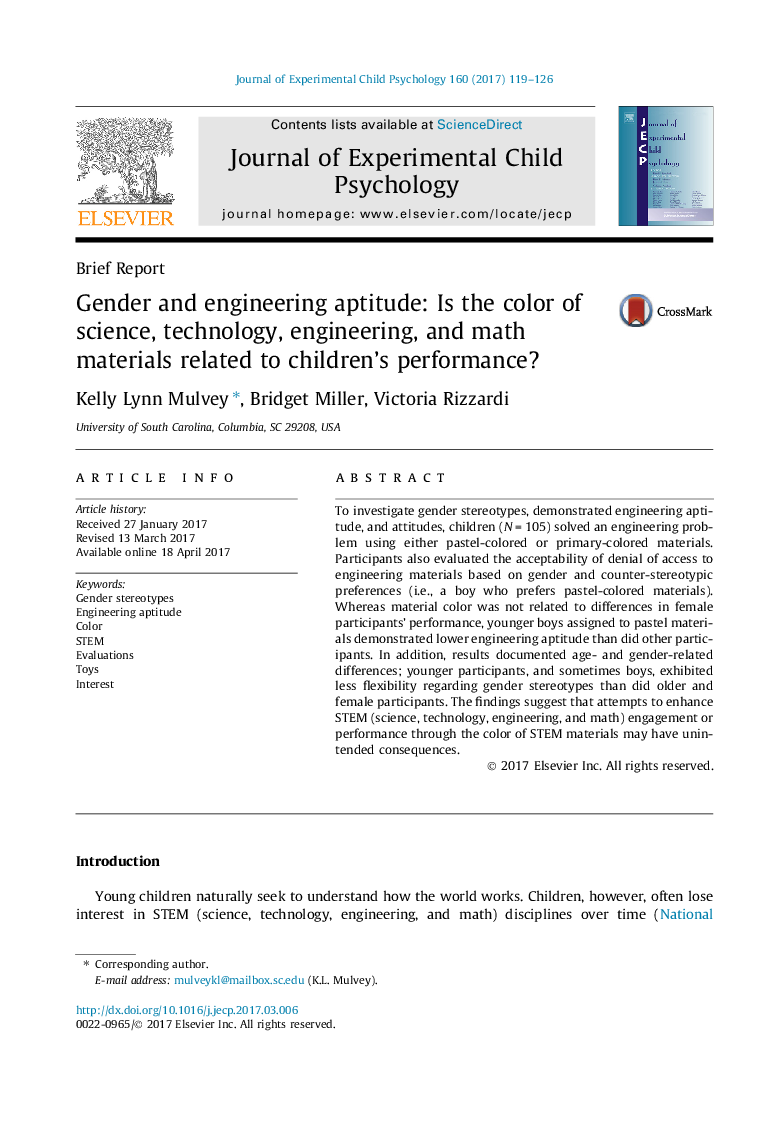| Article ID | Journal | Published Year | Pages | File Type |
|---|---|---|---|---|
| 5039972 | Journal of Experimental Child Psychology | 2017 | 8 Pages |
Abstract
To investigate gender stereotypes, demonstrated engineering aptitude, and attitudes, children (NÂ =Â 105) solved an engineering problem using either pastel-colored or primary-colored materials. Participants also evaluated the acceptability of denial of access to engineering materials based on gender and counter-stereotypic preferences (i.e., a boy who prefers pastel-colored materials). Whereas material color was not related to differences in female participants' performance, younger boys assigned to pastel materials demonstrated lower engineering aptitude than did other participants. In addition, results documented age- and gender-related differences; younger participants, and sometimes boys, exhibited less flexibility regarding gender stereotypes than did older and female participants. The findings suggest that attempts to enhance STEM (science, technology, engineering, and math) engagement or performance through the color of STEM materials may have unintended consequences.
Related Topics
Social Sciences and Humanities
Psychology
Developmental and Educational Psychology
Authors
Kelly Lynn Mulvey, Bridget Miller, Victoria Rizzardi,
